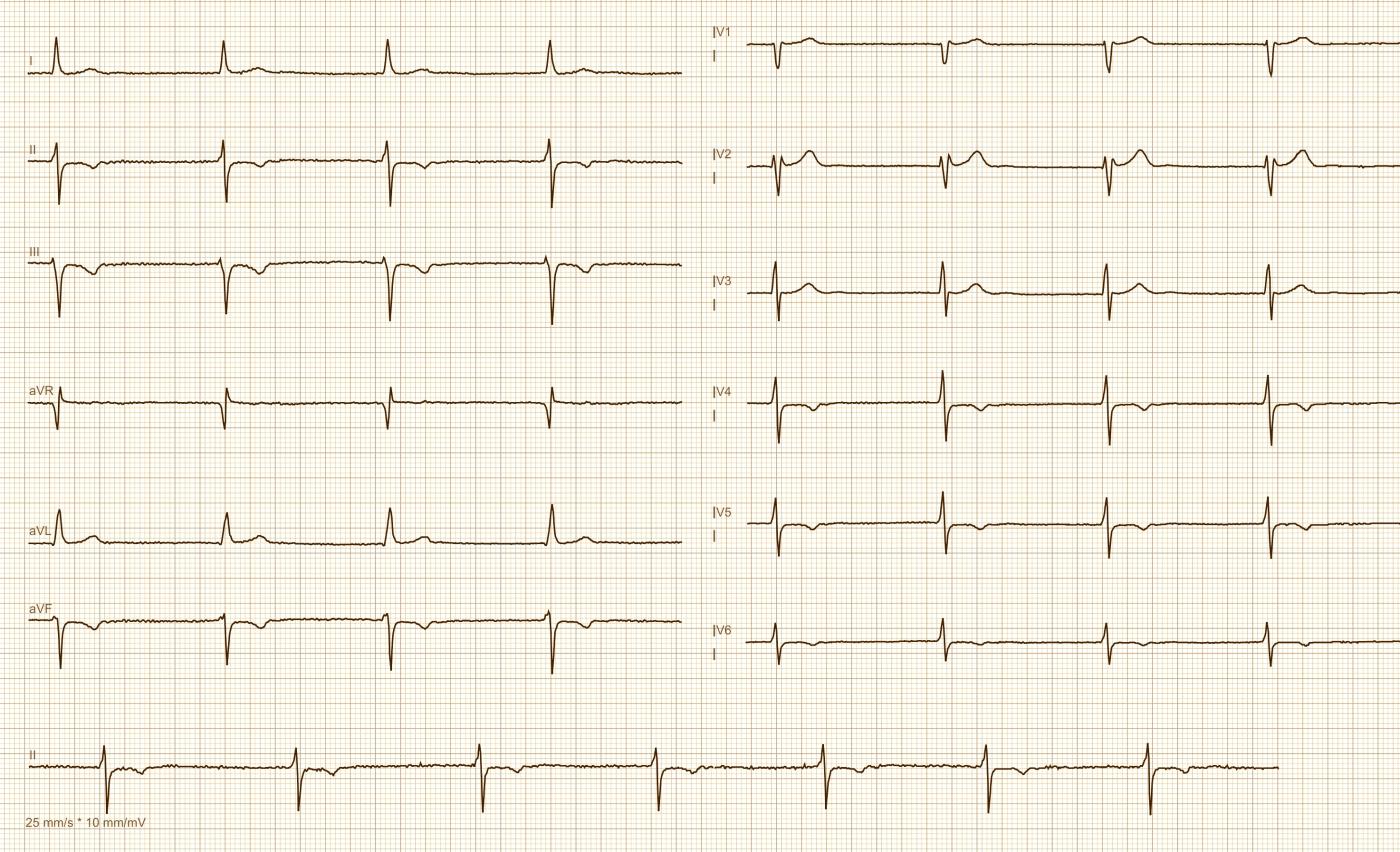In this 12-lead ECG there is a bradycardic rhythm, which is regular, heart rate about 45 bpm. The QRS complexes are narrow.
What is this rhythm called?
There are no P waves present, and no flutter or fibrillation waves can be seen.
There are 2 possibilities:
1. There is a sinus arrest with a junctional escape rhythm. The junctional rhythm either cannot conduct retrograde to the atria (therefore no inverted retrograde P wave can be seen) or the retrograde P wave is hidden in the QRS complex (atria and ventricles are excited simultaneously).
2. There is very fine atrial fibrillation (which is usually seen in long-lasting atrial fibrillation that has been present for many years).
Since the rhythm is regular, it could then not be a bradyarrhythmia in atrial fibrillation but a junctional escaperhythm in atrial fibrillation and 3rd degree AVB.
Comparative ECGs could be used to differentiate between these two variants, and a Holter ECG could also be helpful.
-

- Dr A Röschl's blog
- Log in or register to post comments
All our content is FREE & COPYRIGHT FREE for non-commercial use
Please be courteous and leave any watermark or author attribution on content you reproduce.


